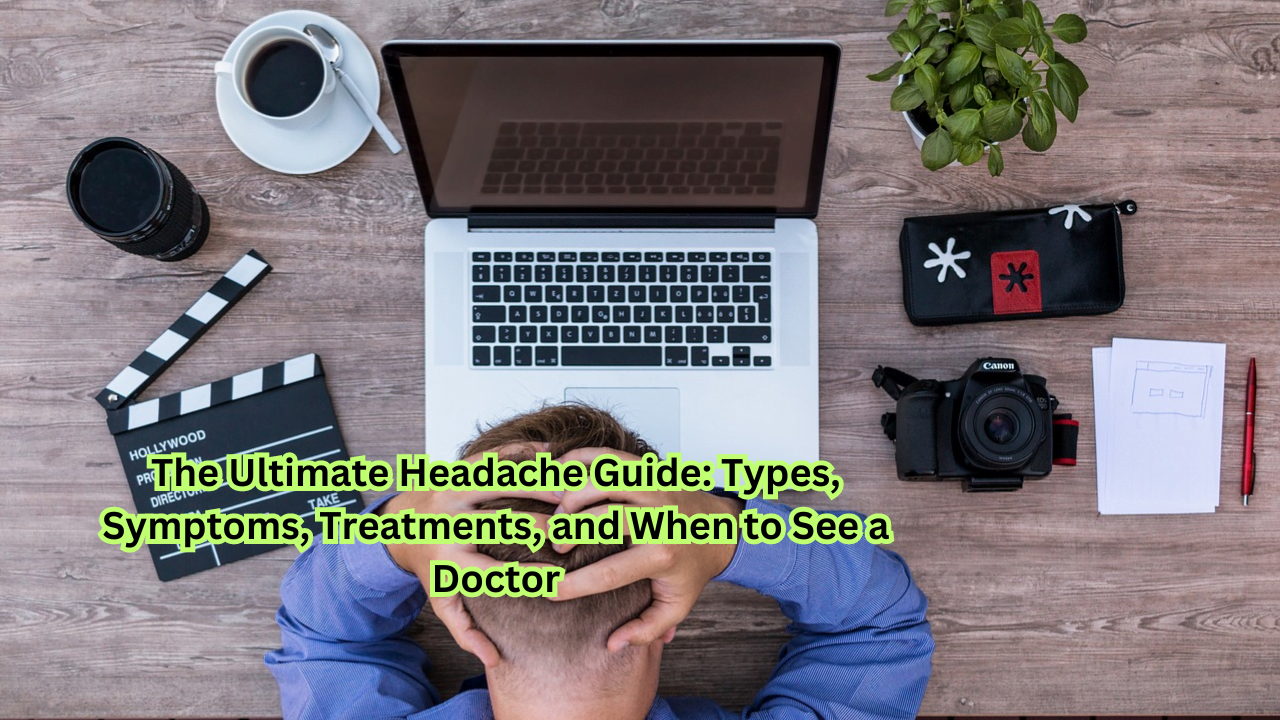Dr. Soniya Tambe, MD, DM in Neurology, Migraine Certification (Mayo Clinic), a Neurologist and Epileptologist at Kauvery Hospital in Electronic City, Bangalore, elucidates the diverse classifications of headaches:
Tension-Type Headache: A mild to moderately severe headache often described as a tight band around the head, it stands as the most prevalent type of headache.
Migraine: These headaches are profoundly debilitating, typically affecting one side of the head and persisting from 4 to 72 hours without treatment. They are accompanied by nausea, vomiting, and heightened sensitivity to light and sound. Patients often identify triggers such as skipped meals, inadequate sleep, alcohol consumption, specific odors, or exposure to sunlight.
Unlocking the Mystery of Headaches: Types, Causes, and Effective Treatments
Cluster Headache: Referred to as “suicidal headaches” due to their intensity, they localize behind the eyes and are characterized by a stabbing sensation in the eye. There’s also concurrent redness and watering of the eye and nose.
Post-Traumatic Headache: Arising subsequent to head or neck injuries, these headaches typically commence a week after the injury, persisting for months. They manifest at the front or side of the head or in the neck.
Medication Overuse Headache: Patients with recurrent headaches tend to overuse painkillers, resulting in headaches induced by excessive medication.
Sinus Headache: These headaches are felt within the cheeks and forehead, typically presenting as a continuous pain accompanied by symptoms like fever, nasal congestion, and post-nasal drip.
Headaches: The Most Common Pain and How to Get Relief
Red Flags in Headaches: Certain symptoms indicate potential serious issues warranting urgent attention—such as sudden onset headaches, very high blood pressure, age over 50, headaches during pregnancy, headaches upon waking, double vision, limb weakness, or seizures.
Treatment involves either abortive or preventive measures. Abortive therapy employs medication when symptoms arise, while preventive therapy entails ongoing medication to reduce headache frequency. Medications are customized based on various factors like age, gender, associated symptoms, and existing health conditions.
Suffering from Headaches? Here’s What You Need to Know
Immediate Actions for a Headache: Seek a quiet, dark environment, hydrate, rest, apply a cold cloth to the forehead, take over-the-counter or prescribed headache medication, and attempt to nap or rest.
When to Seek Urgent Care: Seek immediate medical attention if experiencing a sudden, severe headache unlike any previously felt, headaches during physical exertion, headaches lasting more than 3 days, accompanied by fever, a stiff neck, seizures, neurological deficits, following trauma, or during pregnancy. These cases may necessitate neuroimaging to rule out severe causes.
Are Your Headaches Serious? 5 Red Flags You Should Never Ignore
conclusion
Understanding the breadth of headache types, their distinct characteristics, and potential underlying causes is pivotal in providing effective care and improving patients’ well-being. Dr. Soniya Tambe’s detailed breakdown of headache classifications, red flags for serious conditions, and guidelines for immediate and urgent care equips both healthcare professionals and individuals with essential knowledge.
Recognizing primary and secondary headaches, tailoring treatments based on individual factors, and emphasizing timely intervention highlight the significance of proactive management. This comprehensive overview empowers individuals to identify triggers, seek appropriate medical advice, and take necessary actions during headache episodes.
Dr. Tambe’s insights underscore the importance of personalized care, early detection of worrisome symptoms, and the application of both abortive and preventive therapies. By incorporating these insights into practice, healthcare providers can significantly enhance patient outcomes and quality of life for those grappling with headaches.
